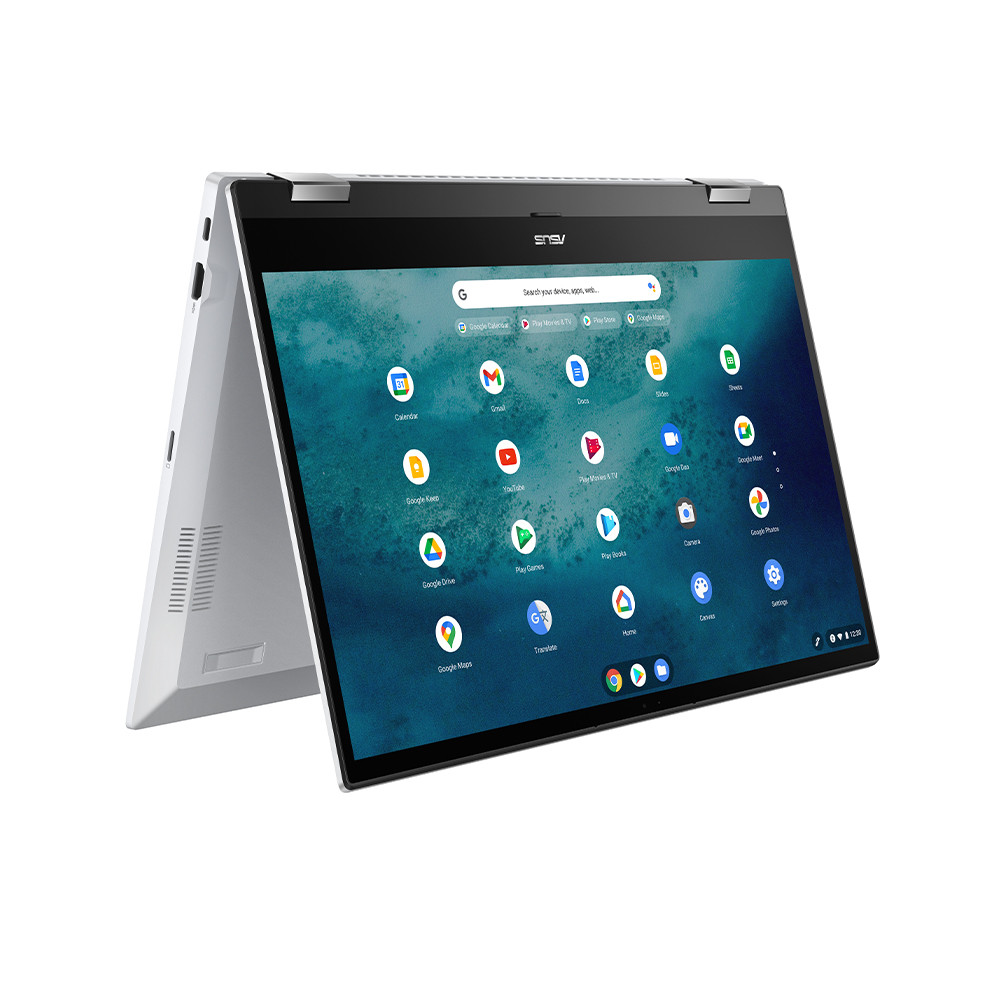Asus ZenWiFi BT10 Wi-Fi 7 mesh router consider: Good multi-gig wi-fi effectivity, nonetheless nonetheless costly
Asus’ ever-expanding family of Wi-Fi 7 routers is rising however as soon as extra with the introduction of the ZenWiFi BT10. In some methods, the ZenWiFi BT10 is very like the ZenWiFi BQ16 Skilled we reviewed earlier, nonetheless it is a step behind in outright effectivity and choices.
Whereas the ZenWiFi BQ16 Skilled is all about delivering completely the quickest wi-fi effectivity and supplying you with a second 6 GHz band, the ZenWiFi BT10 is a tri-band Wi-Fi 7 router that gives you most of the effectivity at a price stage of tons of of {{dollars}} lower. Its output is secure nonetheless not amongst these of the biggest Wi-Fi routers.
Design of the Asus ZenWiFi BT10 Wi-Fi 7 Mesh Router
The ZenWiFi BT10 shares its design language with the BQ16 Skilled. Nonetheless, it is barely shorter and narrower than its pricier sibling (7.48 x 6.14 x 2.91 inches for ZenWiFi BT10 versus 8.4 x 6.9 x 2.8 inches for the BQ16 Skilled). Each node wouldn’t look misplaced sitting on a bookshelf or end desk. In numerous phrases, this design obtained’t battle alongside together with your regular dwelling décor like considered one of many widespread octa-antenna “spider” gaming routers out there available on the market.
There’s a single LED on the lower entrance of the ZenWiFi BT10, slightly below the Asus model. The sunshine flashes quite a few colors to point connection standing (for example, flashing pink signifies a difficulty alongside together with your internet connection). It glows a delicate white when the group standing is nominal. There are fewer ports on the once more than you’ll uncover on the BQ16 Skilled. You get one 10G port for WAN/LAN, one 10G port for LAN, and one 1G port for WAN/LAN.
At this worth stage, 1G LAN is a headscratcher, nonetheless we had the similar annoyance with the BQ16 Skilled. There’s moreover a USB 3.2 port for attaching a storage gadget or printer for group entry. I ought to note that the first router and satellite tv for pc television for laptop are an similar hardware-wise and interchangeable. Whichever node you prepare first turns into the router, whereas the second unit turns into the wi-fi satellite tv for pc television for laptop.
Asus ZenWiFi BT10 Wi-Fi 7 Mesh Router Specs
| Wi-Fi Customary | Wi-Fi 7 (802.11be) |
| Wi-Fi Bands | 2.4 GHz: 2×2 (Tx/Rx), as a lot as 688 Mbps |
| 5 GHz: 4×4 (Tx/Rx), as a lot as 5,764 Mbps | |
| 6 GHz: 4×4 (Tx/Rx), as a lot as 11,529 Mbps | |
| CPU | 2.6 GHz quad-core processor |
| Memory | 2GB RAM, 256GB Flash |
| Safety | 6,000 sq. toes |
| Ports | 1 x 10 Gbps for WAN/LAN, 1 x 10 Gbps for WAN/LAN, 1x 1 Gbps for LAN, 1x USB 3.2 (per node) |
Establishing the ZenWiFi BT10 Wi-Fi 7 Mesh Router
Configuring the ZenWiFi BT10 out of the sphere was comparatively straightforward. I unboxed the first node, plugged in power, a patch cable to my modem, and a cable to my server. I then accessed asusrouter.com from my browser to invoke the setup course of.
The setup program equipped easy-to-understand steps for creating an SSID for the group, gave me an alternative to permit a separate IoT SSID, and allowed me to create an administrator login and password. As quickly as this was completed, the setup program sought out the latest firmware from Asus.
After the first node (router) setup was full, I was requested to activate the second node, which could become the wi-fi satellite tv for pc television for laptop. I plugged throughout the second node, after which it took about 5 minutes for it to sync up with the router and full the group.
My subsequent step was to create separate SSIDs for the three wi-fi bands. I named them Asus_BT10_24, Asus_BT10_5, and Asus_BT10_6 to make testing the 2.4GHz, 5GHz, and 6GHz bands easier for this consider. Nonetheless, after rebooting the router after making use of those changes, I encountered an issue — the satellite tv for pc television for laptop wouldn’t be part of. After loads of confusion and reboots to rectify the difficulty, I resorted to ending a producing unit reset on the satellite tv for pc television for laptop. After performing the manufacturing unit reset, the satellite tv for pc television for laptop was re-paired with the router, and I in no way had any further configuration factors with the system.
As I mentioned earlier, there is not a bodily or {{hardware}} distinction between the router and the satellite tv for pc television for laptop. In consequence, you get the similar restricted number of ports on each node: 10G WAN/LAN, 10G LAN, and 1G WAN/LAN. The 10G LAN port may be utilized to implement a wired backhaul between the router and the satellite tv for pc television for laptop to maximise effectivity. Given that router and satellite tv for pc television for laptop use an similar {{hardware}}, each has two 10 GbE ports on the once more.
In case you don’t have cabling in your own home to reap the advantages of the wired backhaul, the ZenWiFi BT10 – identical to the ZenWiFi BQ16 Skilled – has a beefy wi-fi backhaul. The ZenWiFi BT10 takes good thing about MLO, which is part of the Wi-Fi 7 spec, to bond the 2.4 GHz, 5 GHz, and 6 GHz bands proper right into a single hyperlink.
Asus ZenWiFi BT10 Wi-Fi 7 Mesh Router Software program program
Asus routers use the AsusWRT 5.0 software program program platform, and the ZenWiFi BT10 isn’t any exception. We updated the mesh system to Asus’ latest firmware, 3.0.0.6.102_36758, for testing. Whereas the interface is acquainted to me and anyone who has beforehand dabbled with Asus routers, it could merely become overwhelming with the sheer number of settings you could configure.
Once you enter your administrator login and password, you’re dropped on the router homepage, or “Group Map,” as Asus calls it. It affords internet connection standing, your current WPA security diploma, core utilization proportion for the CPU, RAM utilization, energetic Ethernet ports, the standing of your USB port, and AiMesh standing. If all you want to do is to complete the preliminary setup of the ZenWiFi BT10 and by no means mess with it as soon as extra, you perhaps obtained’t must enterprise away from this homepage.
Nonetheless, for anyone on the market for a mesh Wi-Fi 7 router that costs virtually $1,000, everyone knows you’ll be delving deep into the expansive menu system. Whereas there’s an extreme quantity of to debate on this one consider, some key sections embody AiMesh, which supplies you an abstract of your linked wi-fi nodes and backhaul standing (in my case, the nodes are linked by way of an MLO wi-fi hyperlink). You even have the selection to optimize the AiMesh in case you’re having factors or add one different wi-fi node.
The group tab is the place you could create separate SSIDs in your necessary group, add a customer group, or create completely different networks (Youngsters, IoT, VPN, MLO, and so forth.). Our consider unit bought right here preconfigured with the 2.4GHz, 5GHz, and 6GHz bands all beneath a single SSID (Good Be a part of). Nonetheless, I decided to create an SSID for each band on the first group to take care of points good and tidy.
AI Security is an entire security suite in your router that’s equipped by TrendMicro, whereas USB utility supplies you administration of the entire capabilities potential with the one USB 3.2 port. As an illustration, you could permit a Time Machine backup with an exterior HDD or SSD for Mac laptop methods, create a group printer server, and even be part of a smartphone to utilize its cell connection for internet entry.
Asus ZenWiFi BT10 Wi-Fi 7 Mesh Router Effectivity
Our current Wi-Fi router testbed is a Residence home windows 11 desktop with an MSI Skilled B650M-A Wi-Fi motherboard, AMD Ryzen 5 7600, 32GB of DDR5, a 1TB PCIe 4.0 SSD, and an MSI Herald-BE Wi-Fi 7 PCIe adapter, all of which can be using the newest software program program, BIOS, firmware, and drivers (the place related).
The iPerf3 throughput assessments are carried out using our Residence home windows 11 server outfitted with an onboard 10 Gbps wired group card linked to the ten Gbps LAN port on the ZenWiFi ZenWiFi BT10. Wi-fi assessments embody 6-foot and 25-foot distances. Wi-fi assessments are first carried out with the group free of added website guests from completely different linked purchasers. Subsequent, these self identical assessments are run with simulated website guests from further clients accessing the group (for our testing, we use six purchasers streaming 4K video from YouTube).
The BQ16 Skilled is at current our reigning velocity king amongst Wi-Fi 7 routers (mesh or in some other case). Nonetheless, the ZenWiFi BT10 was no slouch, hitting a imply of two,667 Mbps at a distance of six toes in our uncongested iPerf3 examine on the 6GHz band. The BQ16 Skilled was successfully ahead at 3,523 Mbps, whereas the TP-Hyperlink Deco BE65 Skilled was far behind at 1,846 Mbps. 25-foot testing observed effectivity drop by successfully over 50 p.c to 1,157 Mbps, inserting it on par with the Netgear Orbi 770.
The ZenWiFi BT10 slipped into third place on the 5GHz band, with 1,293 Mbps at six toes, inserting it behind the Deco BE65 Skilled (1,530 Mbps) and the BQ16 Skilled (1,630 Mbps). Stretching out to 25 toes, the ZenWiFi BT10 managed to return in first by the slimmest of margins at 659 Mbps.
The Orbi 770 dominated our 2.4GHz iPerf3 assessments, whereas the ZenWiFi BT10 and BQ16 Skilled duked it out behind the pack in effectivity at every examine distances.
Our congested assessments confirmed that the ZenWiFi BT10 expert a ten to fifteen p.c drop in effectivity all through all bands at 6-feet and 25-feet distances. Likewise, ping situations for the ZenWiFi BT10 principally stayed underneath the 10ms range.
As we always warning, wi-fi effectivity could possibly be extraordinarily variable, and would possibly broadly fluctuate counting on the construction of your own home, rental, or office.
Bottom Line
If the ZenWiFi BQ16 Skilled is the overachiever in Asus’ Wi-Fi 7 router portfolio, the ZenWiFi BT10 doesn’t pretty attain the effectivity highs of its high-flying sibling, nonetheless comes shut enough. Shut-range 6GHz band effectivity surpassing 2,600 Mbps is nice whatever the means you slice it, and effectivity on the other two bands was aggressive with the Netgear Orbi 770 and TP-Hyperlink Deco BE65 Skilled.
I proceed to love the Asus WRT 5.0 interface and its breadth of choices and configuration selections to suit your explicit desires. The additional USB 3.2 controls are moreover welcome. The one precise reservations that I’ve with the ZenWiFi BT10 embody its port setup. There are solely two LAN ports, one amongst which is 1G and the other is 10G. I’d want to see that 1G port bumped to not lower than 2.5G. Sure, you may presumably join a 10G swap to broaden the number of obtainable ports, nonetheless that’s an added worth to an already costly router.
Speaking of pricing, the street worth for the ZenWiFi BT10 is spherical $860or about $300 decrease than the BQ16 Skilled. That’s about $300 dearer than the Orbi 770 2-pack (which didn’t have as strong 6GHz band effectivity). The Deco BE65 Skilled has a street worth of $500however as well as bought right here up transient on 6GHz effectivity. Moreover, take into consideration that the Deco BE65 Skilled choices three nodes (one router plus two satellites) at that $500 worth stage, nonetheless you don’t get 10G connectivity the least bit.
If top-notch 6GHz band effectivity and 10G wired connectivity is a priority, then the Asus ZenWiFi BT10 have to be a primary consideration. Nonetheless, the TP-Hyperlink Deco BE65 Skilled represents a a lot better price for a lot of dwelling clients.







